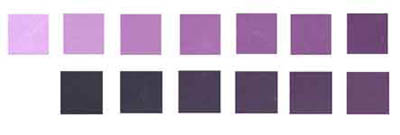
Fig.1 The color appearance when the thickness of the ink layer mixed with two inter-colors (red + green) is changed

Figure 2a The color appearance of the same ink layer thickness change

Fig. 2b The color appearance when the thickness of the ink layer mixed with two inter-colors (red + green) changes

Fig. 2c The color appearance when the thickness of the primary color material (red + yellow) of the inter and non-complementary colors changes

Figure 2d The color appearance of the primary color (yellow) ink layer thickness changes
From Table 1 and Figures 2a to d, it can be seen that when the thickness of the ink layer decreases, the hue of the yellow (primary) changes less, the lightness slightly increases, the saturation decreases (as shown in Figure 2d), and red+green (between colors Mixing) The hue changes from black to purple (theoretically to yellowish gray, which becomes purple due to the color cast of the ink), the lightness increases rapidly, the saturation changes somewhat differently from the other pigments, and the ink layer is thicker (ink When the amount is 1.2ml and the thickness of the ink layer is about 6.5mm), the saturation is small (x=0.3244, y=0.2961). As the ink layer thickness decreases, the saturation gradually increases to reach a certain amount (x=0.3589, y = 0.2627) and then began to decrease (Figure 2b); red + yellow (mixed with the non-complementary color of the primary color material), with the decrease in the thickness of the ink layer, the hue from the red (x = 0.6002, y = 0.3482) Changes to red and yellow (Fig. 2c). Brightness increases and saturation decreases rapidly.
Considering that the nature of the selective absorption of light by the reflecting object and the transmitting object is similar, the phenomenon described above is explained by the absorption and transmission of the incident light in the ideal color filter lamination process.
(to be continued)